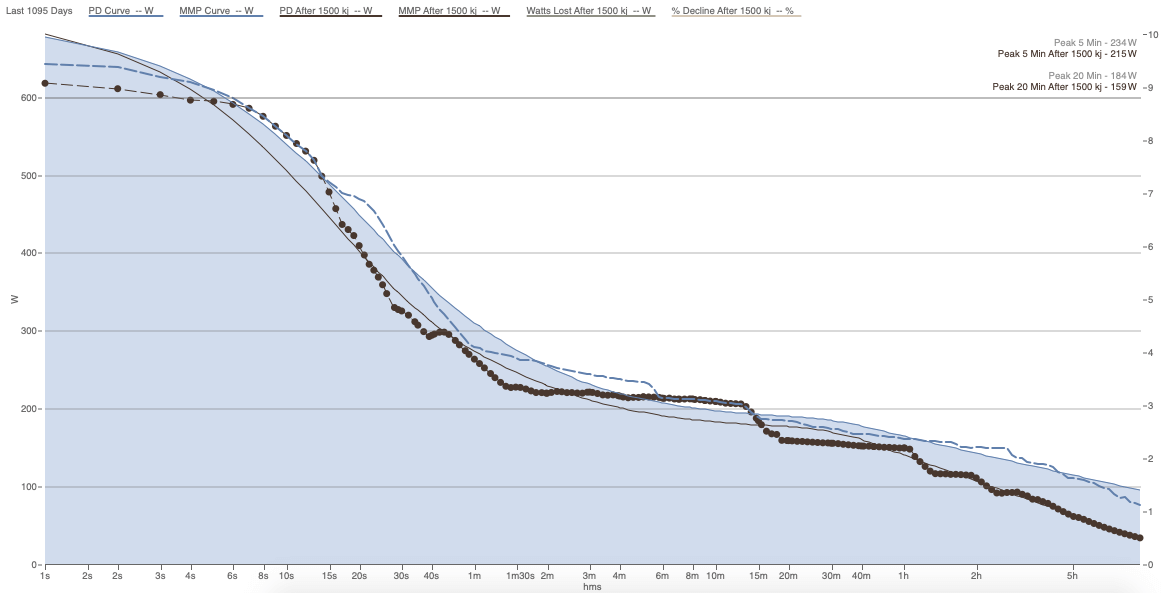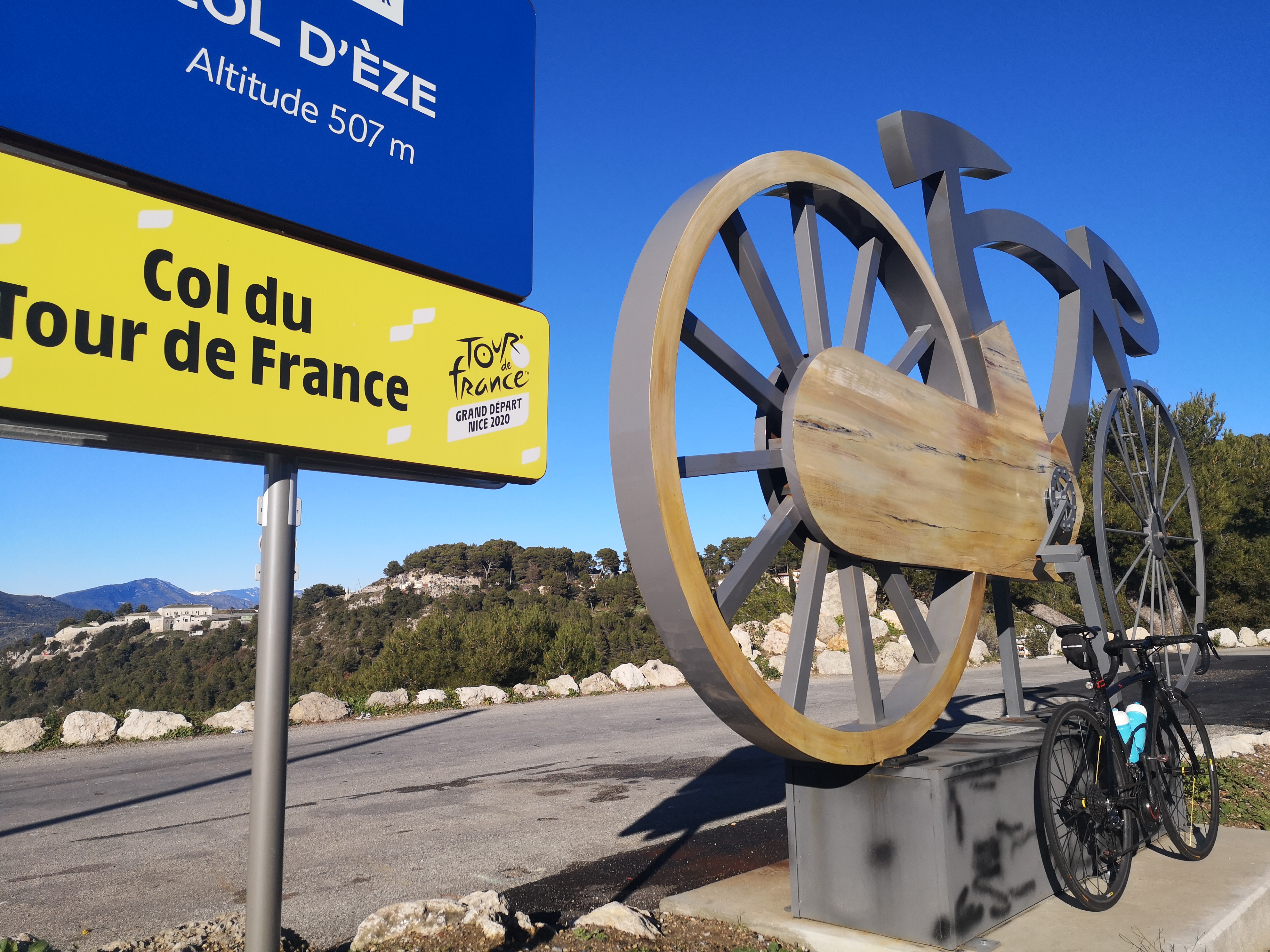New Year, new opportunities, it’s time to plan your peak performances ! We all have the best of intentions leading into the off-season and after a big season, it’s important to have that down time to recharge the battery. That’s a critical part of making your next season even better and if you come into next season with only a 90% charge in the battery you’ll never make that next leap in fitness. One of the critical things that you must examine for next year is whether or not the training you did this year was effective. If you made the improvements you wanted to make then it was definitely effective, but if you didn’t make those gains, you need to change something for next season.
One of the easiest places to make a change is to plan out your peak and sketch out how you are going to get to that peak. Planning for success is something that every winner does and if you don’t plan for success you are planning for failure.
How do you plan a season and what things do you take into consideration when training with a power meter? While this column is too short to go into much detail, I would like you to consider five key factors in your planning for 2020.
Success Factor #1 Lock in your “A” priority events
Take time to look at this years’ race calendar and think about all the races or events you did and then which ones you want to do next year and which races are your top priorities.
Choose
I would suggest making sure that you pick not just one “A” priority event, but make sure there are plenty of races around that “A” race, so that you will be able to take advantage of your peak fitness.
I once had an athlete that was determined to win a particular race on June 9 and I did everything to put him on peak form for this race. Unfortunately, he flatted in the first 5 miles of the race and couldn’t get back to the peloton, which was of course highly disappointing not to mention it ended up being a huge waste of the six months leading up to the race. You see, there weren’t any other races within eight hours drive of his home for the next five weeks and he had the best form of his life, and nowhere but the “Tuesday night world championships” to use it. So, I recommend you pick an event that suits your strengths and weaknesses well and also has other events close to that time frame in order to take advantage of your great form.
Start planning backwards
Once you have determined when you want your peak, you can begin to work backwards from there to establish the different macro cycles of training that you’ll be doing. Macro cycles are the phases of training that you’ll focus on for a four to six weeks at a time in order to build a well-rounded level of fitness in which you can create a peak of form. Using a power meter helps you to determine the optimal training load you can handle each week throughout your build and rest cycles. I use Training Stress Score (TSS) in to establish those training loads and more accurately predict needed training loads each week, along with helping to determine length and intensity of rides.
Success Factor #2 Know your strengths and weaknesses
Every six weeks you should be doing the “Power Profile” test, which tests your best efforts at 5 seconds, 1 minute, 5 minutes and 20 minutes.
Test…
Each of these tests relate to different energy systems in the body, Neuromuscular Power, Anaerobic Capacity, Vo2 Max, and Functional Threshold Power (FTP), respectively and will change at different times and also in relation to each other. When your fitness improves it is not necessarily true that your sprint will improve with your FTP, or that your Anaerobic Capacity will improve when your sprint does. This makes it critical that you test them on a regular basis so you’ll be able to clearly understand which physiological energy system is changing and by how much.
… to know what to train
Clearly understanding your strengths and weaknesses determines the type of training that you will be doing within each micro cycle (two to three week periods) and also will help you to determine if your weakness is a barrier to success. For example, if your goal is to race well at the Tour of Gila, then you’ll need to be able to climb very well and that means you’ll want the highest FTP you can achieve by race day and sprinting really might not be that important to your overall success.
However, through your power profile testing you have learned that your sprint (5 second test) is the weakest of your energy systems and your FTP is the strongest (even though you always want it to improve). Should you then spend all of your time training your sprint? No, that probably won’t help you to win the Tour of Gila overall and I would bet even if you trained your sprint 10 hours a week, you would not see much improvement as it tends to be more of a genetic limiter than one that can be improved through training.
The bottom line is that you absolutely need to know for certain which are your true strengths and true weaknesses, and as long as you test these regularly, you’ll know when exactly these systems change after each training macro cycle and this will help to keep up on track for your peak along with making you aware of your racing tactical limitations.
Success Factor #3 Understand your secondary limiters
Along with understanding your gross strengths and weaknesses (whether or not I have a strong aerobic or anaerobic ability), you also need to understand how quickly you fatigue within these systems.
The idea of fatigue resistance
Some riders may have a tremendous initial ‘snap’ when they sprint, but fatigue quickly after a mere 100 meters of sprinting. Other riders might not have an incredible ‘snap’ but are more ‘diesel engines’ when it comes to closing gaps, chasing down breakaways and hardly seem to fatigue at all no matter the time or distance. The ability to ‘diesel’ means that you have more fatigue resistance than other riders and that fatigue resistance can be a part of each of your energy systems.
A sprinter like Robbie McEwen, who has an incredible snap, must win races by coming out of the draft with less than 100meters to go since he has poor fatigue resistance, whereas a sprinter like Alessandro Petacchi needs to start his sprint from 250-300 meters out so he can take advantage of his strong fatigue resistance in the last 50m as others are fading. Robbie McEwen probably can do about 1800 watts for 5 seconds, but then only holds 1000 for 10 seconds and then at 20 seconds is down to 850 watts, whereas Petacchi starts out with 1500watts, fatigues to 1300 watts by 10 seconds and still is cranking out 1100 watts at 20 seconds. This fatigue resistance that Petacchi has will help him determine his sprint strategy and also the types of training he needs to do in order to improve his snap as well.
Testing & acknowledging your fatigue resistance
The “Fatigue Profiling” test is similar to the “Power Profile” test, but extends each time period on either side of the test periods:
| TESTS | Sprint | Anaerobic Capacity | VO2max | FTP |
| Power profile | 5 sec | 1 min | 5 min | 20 min |
| Fatigue resistance | 5 sec, 10 sec, 20 sec | 30 sec, 1 min, 2 min | 3 min, 5 min, 8 min | 20 min, 60 min, 90 min |
This test will allow you to clearly understand whether you are true ‘diesel’(strong fatigue resistance) or not(poor fatigue resistance).

How do you use this increased knowledge of your physiology? By knowing your secondary limiters, you have another area to focus on in your training to help improve those limiters and give you more tactical racing options to use during your races.
Success Factor #4 Plan in your rest days and rest weeks
Each week, you should have a rest day, where you either stay off the bike completely or just ride ‘embarrassingly slow’. This is absolutely a critical factor for success and so many riders just don’t do it.
 Resting takes courage
Resting takes courage
Your body needs to recover, recharge and rebuild for the next day of hard training and a day of very easy riding or complete rest is really the only way to do it. This is the easiest part of training and it’s an important one. Many cyclists ride a little too hard on their easy days in order for them to be truly rest days, so when you do ride easy, go slow, and use your power meter as your governor.
Your power should be under 56% of your FTP about 90% of the time, but if you have to do 400 watts to get up a hill or fall over, then do the 400 watts, but maybe you’ll want to select a different route the next easy ride.
Plan your rest
Throughout your plan for next year, you’ll also want to schedule in rest weeks and these allow you to improve as it’s the rest weeks when your body gets stronger from all of the hard training you have been doing. The great thing about planning in rest weeks and then sticking to them is that you force yourself to re-charge your battery no matter whether you feel like it or not. Even though you might not feel like you need a rest week, you can keep pushing through but you could end up compromising your immune system or possibly compromising your next hard build cycle. Scheduling in those rest weeks will control your overall training stress as well and prevent you from overtraining.
How much rest do you need in a rest week? I would suggest looking at your Training Stress Score chart so that you can see how many TSS points you accumulate during a normal week of training and then half that amount of TSS for your rest week. If your normal week is between 700-800 TSS, then somewhere between 350-400 TSS for a rest week would be plenty and if you do less that would be fine as well.
Success Factor #5 Build the Plan and do your best to stick to it
While this seems relatively simple it’s much harder to actually create, implement and then keep to the plan throughout the season.
Start backwards
Life does interfere and that’s one of the more challenging parts about cycling or any activity that you are committed to, and has to be worked around the rest of your life. When you build a training plan, you always work backwards from the goal date and that begins to define your rest weeks, specific training weeks where you focus on your primary and secondary limiters and your “power foundation”.
Build your power foundation
Your power foundation is really the foundation of aerobic work that you lay down in order to be ready for the more specific work needed later. This is not ‘base’ training, as that really is easy riding at endurance pace for hours on end and your power foundation is built on riding more intensely (tempo pace), and for shorter periods of time. In this day and age, we all have less and less time to train, and only the pros or Category 1 riders have time to ride an easy 5 hours every day for months on end and in reality, if we did that, our threshold power would likely decrease from lack of intensity.
What I like most about riding at tempo (76-90% of your FTP) is that it creates just enough stress on your aerobic system to maintain fitness and also is tough enough to keep those muscles engaged in pedaling hard on the bike. This dual strain keeps your cardiovascular system primed for later work and also makes sure that you have the needed muscular endurance in order to do the longer rides on weekends and later in the year. If you want to go to the next level, then you have to integrate in a long ride (4-6 hours) at least once and preferably twice a month to achieve the needed cardiovascular and muscular strain to improve.
Your power foundation phase should last for a solid 8 weeks before starting with focusing on your primary and secondary limiters and I would recommend for most people this power foundation phase occurs from December to February depending on when you are planning on peaking.
Incorporate limiters
After this phase, you should make sure your plan begins to incorporate specific limiters even if you do just them once a week while continuing your work right at FTP. As you get closer and closer to your peak fitness, you work to improve your shorter anaerobic efforts as your body will adapt much quicker to them than to your longer aerobic efforts.
Don’t be afraid of missing a workout
One common mistake that many people make is that they ‘stack’ workouts when they miss them, so avoid this if you can. If you miss the Tuesday workout, then don’t try and push everything back one day so you still get in the workouts. It’s better for you to just move along to the Wednesday workout.
The only exception to this is when the Tuesday workout was addressing a key limiter to success and in that case, substitute the Tuesday workout for Wednesday and just forget about the Wednesday one.
Go for it !
There are many factors that help you to success in cycling and books have been written about them. It’s my hope that this article will inspire you to take some time now and do these steps to plan for your success.
Plan for success and use your power meter to help you stay on target.
If you don’t know you are improving or know your strengths and weaknesses then how will you improve? How will you reach your goal no matter how large or how small. A carpenter does not just tell the guys one day to show up with a ton of wood and we’ll throw something together and then end up with a perfect house. Each carpenter starts with a blueprint, a plan, a way to make sure they are building the house correctly.
Once that plan is established then every once in a while situations come along and you have to adapt to them, that’s normal, but you always come back to the master plan. We plan for success in the rest of our lives, and we should do the same in cycling.
Measure your results accurately, consistently and you’ll know when to make changes to your training plan so that you do achieve the best possible benefits a training plan can give you.
This article is part of a series of articles initially written and published by Hunter Allen on Peaks Coaching Group , which we share here thanks to our partnership.
Hunter Allen is a USA Cycling Level 1 coach and former Professional Cyclist ; co-author of “Training and Racing with a Power Meter, co-developer of TrainingPeaks Software, and CEO and founder of the Peaks Coaching Group. He and his coaches develop custom training plans for all cyclists in order to help them achieve their dreams, online training programs are also available at www.TrainingPeaks.com/hunter and you can contact Hunter directly on www.PeaksCoachingGroup.com







